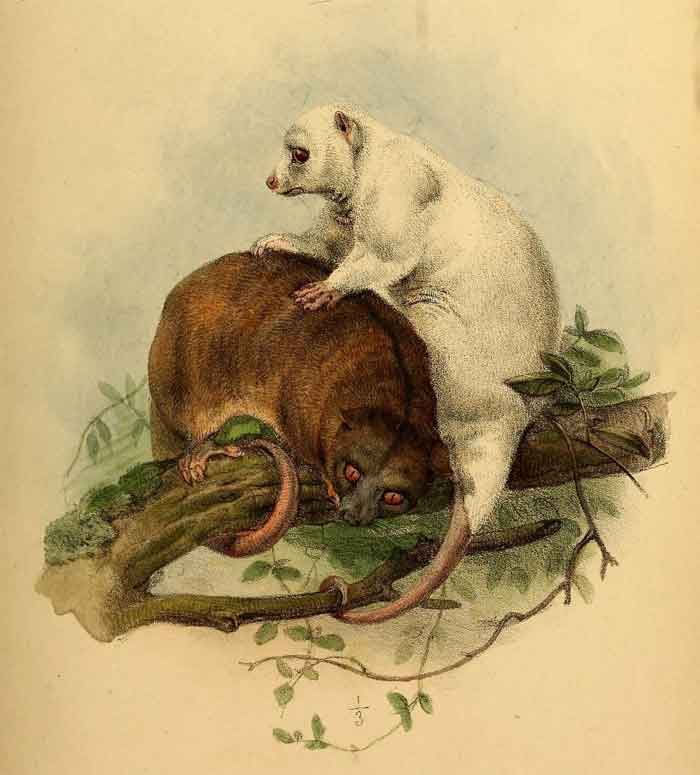
Superregnum: Eukaryota
Cladus: Unikonta
Cladus: Opisthokonta
Cladus: Holozoa
Regnum: Animalia
Subregnum: Eumetazoa
Cladus: Bilateria
Cladus: Nephrozoa
Superphylum: Deuterostomia
Phylum: Chordata
Subphylum: Vertebrata
Infraphylum: Gnathostomata
Megaclassis: Osteichthyes
Cladus: Sarcopterygii
Cladus: Rhipidistia
Cladus: Tetrapodomorpha
Cladus: Eotetrapodiformes
Cladus: Elpistostegalia
Superclassis: Tetrapoda
Cladus: Reptiliomorpha
Cladus: Amniota
Cladus: Synapsida
Cladus: Eupelycosauria
Cladus: Sphenacodontia
Cladus: Sphenacodontoidea
Cladus: Therapsida
Cladus: Theriodontia
Cladus: Cynodontia
Cladus: Eucynodontia
Cladus: Probainognathia
Cladus: Prozostrodontia
Cladus: Mammaliaformes
Classis: Mammalia
Subclassis: Trechnotheria
Infraclassis: Zatheria
Supercohors: Theria
Cladus: Metatheria
Cladus: Marsupialiformes
Cohors: Marsupialia
Cladus: Australidelphia
Cladus: Eomarsupialia
Ordo: Diprotodontia
Subordo: Phalangeriformes
Superfamilia: Phalangeroidea
Familia: Phalangeridae
Subfamilia: Phalangerinae
Genus: Phalanger
Species: Phalanger orientalis
Subspecies: P. o. breviceps – P. o. orientalis
Name
Phalanger orientalis (Pallas, 1766)
Type material: Unknown.
Type locality: Ambon.
Combinations
Didelphis orientalis Pallas, 1766: 55 [original combination]
References
Primary references
Pallas, P.S. 1766. Miscellanea zoologica: quibus novae imprimis atque obscurae animalium species describuntur et observationibus iconibusque illustrantur. Petrum van Cleef: Hagae Comitum. i–xii + 1–224 pp., pl. 1–14. BHL Reference page.
Links
IUCN: Phalanger orientalis (Least Concern)
Vernacular names
English: Northern Common Cuscus
polski: Kuskus szary
The northern common cuscus (Phalanger orientalis), also known as the gray cuscus, is a species of marsupial in the family Phalangeridae native to northern New Guinea and adjacent smaller islands, but is now also found in the Bismarck Archipelago, southeast and central Moluccas, the Solomons, and Timor, where it is believed to have been introduced in prehistoric times from New Guinea.[2][4] It was formerly considered conspecific with the allopatric P. intercastellanus and P. mimicus.
It is hunted for human consumption in New Guinea.[5]
Names
It is known as laku ita in the Naueti language[6] or meda in the Tetum Terik Tetum language of Timor-Leste.
Habitat
The northern common cuscus normally inhabits disturbed habitats. These would include secondary forest, plantations, and gardens. This species is also found in primary tropical forests.[2] While living in the arboreal environments, hunters in the area believe that the tree hollows are the preferred den site of the cuscus.[7] Local villagers reported that the northern common cuscus can be found in any substantially forested areas from coastal monsoon rainforest and gallery forest to the remnant montane rainforest.[7]
Distribution
The northern common cuscus inhabits the islands of Timor, specifically Indonesia and Timor-Leste, Wetar and Leti (both to Indonesia) through the Kai Islands and a number of the Moluccan Islands of Indonesia (including Ambon, Buru, and Seram); it is also found on the islands of Misool, Waigeo, Batanta, and Salawati (all Indonesia), and ranges over much of the northern part of the island of New Guinea (Indonesia and Papua New Guinea), including a number of offshore islands.[2] It ranges as far east as the Bismarck Archipelago, Papua New Guinea, where it is present on many islands including the islands of New Britain and New Ireland. It also occurs on many of the Solomon Islands.[2] It is believed that many of the insular island populations are the result of prehistorical introductions, possibly including Timor, Seram, Buru, Sanana, the Kai Islands, the Bismarck Archipelago, and the Solomon Island chain.[2] The northern common cuscus was introduced into New Ireland between 10,000 and 20,000 years ago, and into the Solomon Islands after 6,000 years ago; in Biak Island and Supiori Island, it is also an introduced species.[4]
Niche
Generally, its niche is thought to be that of a nocturnal arboreal folivore with frugivorous tendencies.[8][9][10]
References
Wikispecies has information related to Phalanger orientalis.
Wikimedia Commons has media related to Phalanger orientalis.
Groves, C. P. (2005). Wilson, D. E.; Reeder, D. M. (eds.). Mammal Species of the World: A Taxonomic and Geographic Reference (3rd ed.). Baltimore: Johns Hopkins University Press. p. 47. ISBN 0-801-88221-4. OCLC 62265494.
Leary, T.; Singadan, R.; Menzies, J.; Helgen, K.; Wright, D.; Allison, A.; Hamilton, S.; Salas, L.; Dickman, C. (2016). "Phalanger orientalis". IUCN Red List of Threatened Species. 2016: e.T16847A21951519. doi:10.2305/IUCN.UK.2016-2.RLTS.T16847A21951519.en. Retrieved 12 November 2021.
"Appendices | CITES". cites.org. Retrieved 2022-01-14.
Schapper, Antoinette (2011). "Phalanger Facts: Notes on Blust's Marsupial Reconstructions". Oceanic Linguistics. 50 (1): 258–272. doi:10.1353/ol.2011.0004. S2CID 145482148.
Margaretha Pangau-Adam; Richard Noske; Michael Muehlenberg (2012). "Wildmeat or Bushmeat? Subsistence Hunting and Commercial Harvesting in Papua (West New Guinea), Indonesia". Hum Ecol. 40: 611–621. doi:10.1007/s10745-012-9492-5.
"'cuscus'/'kuskus'". LexiRumah. 3.0.0.
TE Heinsohn (January 2005). "Den sites and habitats utilised by the northern common cuscus Phalanger orientalis (Marsupialia: Phalangeridae) in East Timor". Australian Mammalogy. 27 (1): 99–101. doi:10.1071/AM05099.
FLANNERY TF (1994). Possums of the world: a monograph of the Phalangeroidea. Sydney: GeoProductions / Australian Museum.
FLANNERY TF (1995a). Mammals of New Guinea. Sydney: Australian Museum / Reed Books.
FLANNERY TF (1995b). Mammals of the south-west Pacific and Moluccan Islands. Sydney: Australian Museum / Reed Books.
Retrieved from "http://en.wikipedia.org/"
All text is available under the terms of the GNU Free Documentation License

